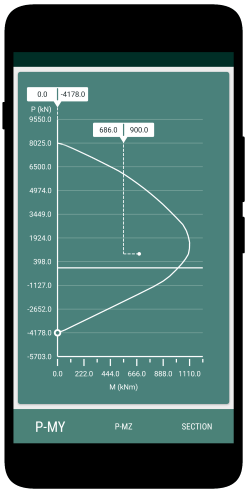Longitudinal reinforcement is provided in column to carry the applied axial load and bending moment along with concrete.
Minimum longitudinal reinforcement
It should be at least 0.8 percent of the gross cross sectional area required.
Reason: Concrete is relatively weak in tension. Minimum reinforcement is provided to ensure that.
- The column has normal flexural resistance under unforseen eccentricities in loading, which could lead to the development of tensile stresses in the member.
- Due to creep and shrinkage additional stresses are present on the reinforcement, which could lead to yielding of the bar.
- It helps in distribution of the creep and shrinkage stress to more number of bars.
- We require the gross cross sectional area to resist direct stress. If the area provided is more than that required, the minimum reinforcement should be calculated based on the area required.
Maximum longitudinal reinforcement
The maximum amount of steel should be 4 percent of the gross cross sectional area required.
Reason: So that concrete could be easily placed and compacted. It prevents the overcrowding of the interior of the column with reinforcement. In turn, restrict the flow of the concrete/ aggregate.
Minimum diameter of bar
Longitudinal bars in column should not be less than 12 mm in diameter.
Reason:
- To prevent buckling of the bar under compressive loads.
- It is based on the requirements of stiffness and, therefore, is independent of the strength or type of steel.
Minimum number of bars
Atleast 4 bars (one at each end) should be provided in a column with the rectangular column. For a circular section atleast 6 bars (equally spaced near the circumference).
Reason:
- Provide reinforcement at locations where we expect tensile stresses in a column.
- Reversal of bending moment may occur and to prevent the development of tensile crack’s we distribute the bars equally.
- This arrangement leads to the proper distribution of the stiffness inside the column to take both axial forces and bending moment.
Minimum spacing between bars
The minimum clear spacing between the bars should be more than the nominal maximum size of aggregate + 5 mm.
Reason: For proper placement and compaction of concrete. Require minimum spacing for the proper flow of concrete and aggregate; thus should be more than the nominal size of the aggregate so that it could pass through.
Maximum spacing between bars
The space between longitudinal bars should not be more than 300 mm center to center along the periphery of the column.
Reason:
- To keep the shrinkage/ flexural cracking of concrete under control.
- This is to prevent the cracking of concrete near to the reinforcing bars. But the concrete present between the bars is not restrain by reinforcement.
- If spacing is more, then that could lead to the development of excessive shrinkage/ flexural cracking in this unrestrained zone of concrete.
Minimum cover
As per IS provide a minimum clear cover of 40 mm or bar diameter (whichever is greater), to the column ties. A reduced cover of 25 mm is permitted in small-sized columns (D<= 200 mm) and whose reinforcing bars do not exceed 12 mm.
Reason: The concrete cover must have a minimum thickness for three main reasons, To protect the steel reinforcement bars from environmental effects to prevent their corrosion; to provide thermal insulation, which protects the reinforcement bars from fire, and; to give reinforcing bars sufficient embedding to enable them to be stress without slipping.
Maximum cover
As per IS provide maximum clear cover of 75 mm to the column ties.
Reason: Thick cover leads to increased crack widths in flexural reinforced concrete members. Large crack widths (greater than 0.3 mm) permit ingress of moisture and chemical attack to the concrete, resulting in possible corrosion of reinforcement and deterioration of concrete. Therefore, thick covers defeat the very purpose for which it is provided.
Check this post to read about the detailing specification for a beam section.
Column design
- RCC Column Design is a free app for designing reinforced concrete columns as per Indian Standards.
- RCC Design and detailing could be performed for uniaxial and biaxial bending conditions specified in IS456:2000
- Option to save the design projects in local storage.
- Detailed calculation steps presented for verification and validation.
